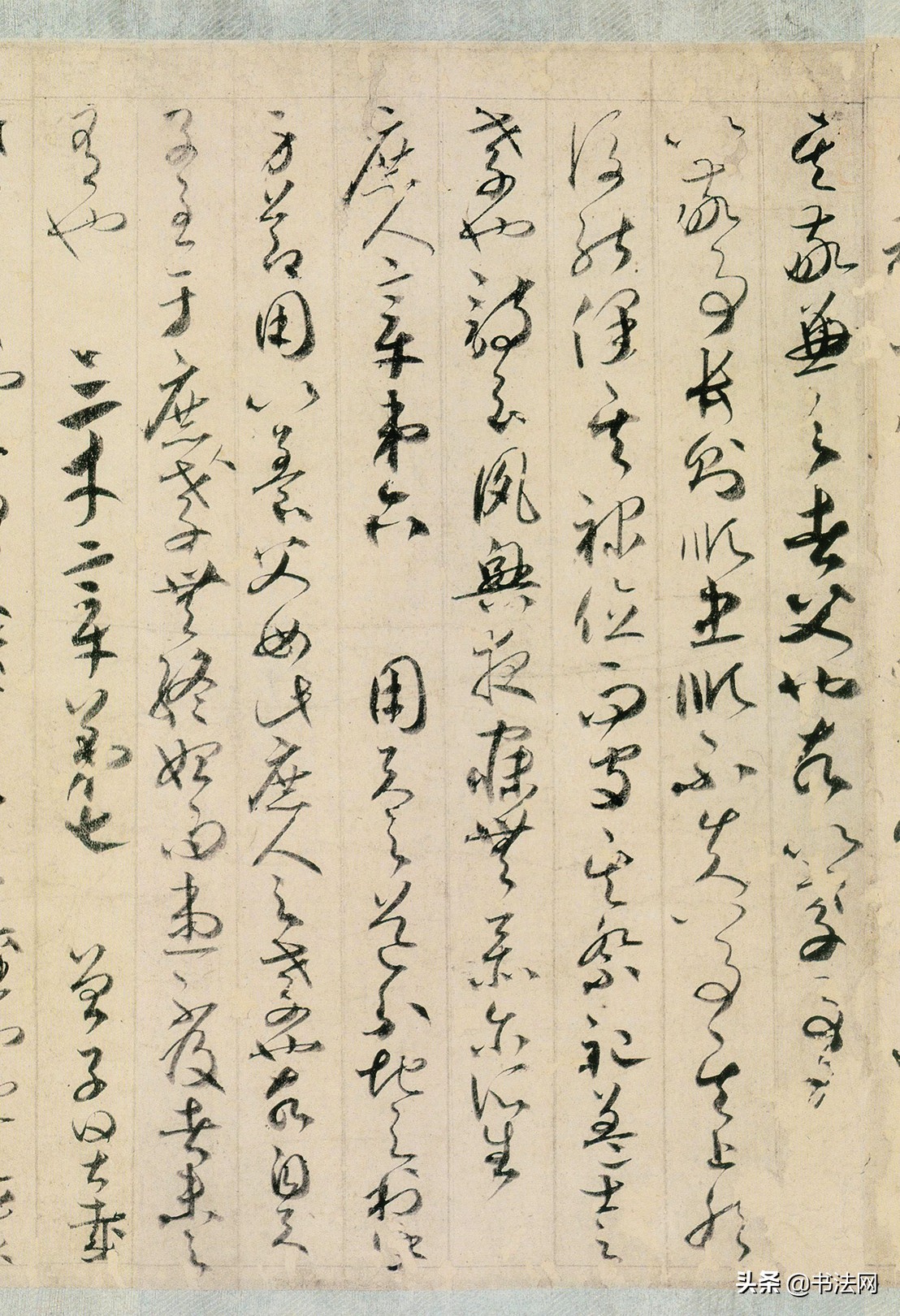The world's most famous cursive script in the Imperial Palace of Japan was collected by the Emperor of Japan for more than 500 years, and he did not return to China until 2006!
In 2006, there was a large -- "Sino-Japanese Calligraphy Treasures Exhibition" at the Shanghai Municipal Museum, which exhibited a large number of authentic works of Chinese Tang, Song, and Yuan masters who flowed into Japan, and a large number of Japanese collections were historically imported into Japan.
One of the most precious pieces was introduced to Japan at the end of the Ming Dynasty, and this work was later dedicated to the Japanese emperor, who collected it for more than 500 years.
This work is an extremely rare cursive masterpiece of the Tang Dynasty, and at the beginning of this volume there is the inscription "Present Wen Xiao Jing", and the total volume adds up to more than 1,000 words, which is clearly recorded in the Song Huizong's Xuanhe Book Genealogy.
This work is the Tang Dynasty He Zhizhang's cursive "Filial Piety Classic".
He Zhizhang's status in the calligraphy circles of the Tang Dynasty, with the title of "Grass Sage", was extremely high, not inferior to Zhang Xu's people, and he was also known as the "Eight Immortals in Drinking" together with Li Bai and others.
We know that at present, there are very few authentic cursive handwriting that can be handed down from generation to generation in the Tang Dynasty, but only a few, Sun Guoting, Huai Su, Gao Xian, and He Zhizhang's cursive writing has a very high status in the Tang Dynasty, Tao Zongyi said:
"Good grass, good, weighed in the world." In the evening festival, especially the birthday, every drunkenness will be used as a word, and the grass will be interspersed, and the time will be strange, so that the awakening and the return of the book may not be er. ”
He Zhizhang not only has a very high level of poetry, but is also the leader of the dynasty, even when he was in his later years, the emperor personally sent it to him, which shows that with the height of his status, it can be said that he is the best calligrapher of the Tang Dynasty, the calligrapher of the highest status, and also the most stylish calligrapher.
From the perspective of calligraphy techniques, this volume of "Filial Piety" does not have the slightest sense of madness, and the words reveal a kind of quaint atmosphere of chapter grass, and the words are born of virtual reality, following the trend, without the slightest delay, from this text, we can glimpse that He Zhizhang is a noble and uninhibited man.
We know that to judge whether a person's calligraphy is clever, the first judgment is to see whether he is a descendant of "brushwork", in the Tang Dynasty the inheritance of penmanship began from Ouyang Yuan and Yu Shinan, and then to Chu Suiliang, Sun Guoting, Zhong Shaojing, and He Zhizhang's cursive writing came from Li Beihai's teaching, and then passed on to Li Bai and Zhang Xu, so it can be seen that as a legitimate "penmanship" descendant, He Zhizhang is a core figure, and the importance of his inkblot "Filial Piety" is self-evident.
As a rare cursive authentic handwriting in the Tang Dynasty, it is also written by a top-notch master, and it contains a "pen code", and it has been treasured by the Japanese emperor for hundreds of years, and some people have valued this work, believing that its market value exceeds 1 billion.
This work also has one of the most obvious features, because the material of the writing paper is relatively special, which can perfectly present the layers of ink color when writing, after more than 1,000 years, the layering of ink color is more distinct, and it is easier for future generations to perceive the delicate subtleties of the pen.
It is worth every Chinese's lifelong collection of the Tang Dynasty's unique divine works.
Today, we have carried out an ultra-high-definition 1:1 museum-level reproduction of the original work of He Zhizhang's cursive "Filial Piety", restoring the same work as the original work, even the change of ink color and the subtle dot painting are delicate and realistic, and equipped with hand-framed for everyone to collect and copy and gift gifts.
To purchase the full volume of the Cursive Book of Filial Piety, please click "Take a Look" below
He Zhizhang's cursive "Filial Piety"
